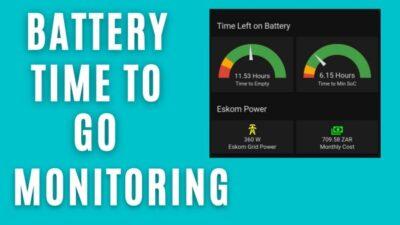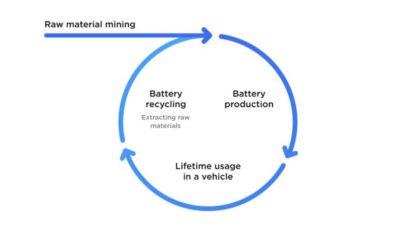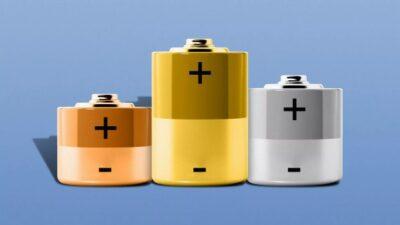3 Likes
4 Shares
This Register article summarizes the situation better than anything I've seen yet. Goes over all the major alternatives to lithium ion and the magnesium, lithium-sulphur, sodium ion, solid state, etc. etc. We got lithium-ion thru a confluence of economics (Sony's idle thin-film factories converted to battery film manufacture) and chemistry.Battery boffins therefore think that lithium-ion has at least a decade of dominance ahead of it.
"The battery industry is all about cost," says Sam Jaffe of Cairn ERA, a battery research outfit. "And cost is a function of scale: you need big factories and mature supply chains. That's not something you can build overnight. It took lithium-ion 15 years before it went from a highly specialised product to more of a mass-market product. That will be true of any upcoming battery technology: it takes decades."
For solar, the dominant powerhouse is the much safer, longer lasting, deeper cycling, and CHEAPER lithium iron phosphate..
https://www.theregister.com/2020/12/30/beyond_lithium_ion_batteries/
New lithium-iron phosphate battery maker American Battery Factory (ABF) announced that Tucson, Arizona, has been selected as the site for the first in a planned series of battery cell gigafactories based in the United States. The site will serve as ABF’s official headquarters and will be the country’s largest gigafactory for the production of LFP…
https://www.solarpowerworldonline.com/2022/12/american-battery-factory-announces-first-lfp-gigafactory-location-in-arizona/
#news, #batteries, #storage, #components, #americanbatteryfactory
By GABE STERN Associated Press/Report for America
https://www.power-eng.com/ap-news/nevada-approves-105m-in-tax-incentives-for-battery-storage-plant/
#news, #energy, #batteries, #ap, #storage
NanoGraf Technologies claims it has developed the highest energy-density cylindrical 18650 Lithium-ion cell in the world, with an energy-density of 810 Wh/L (4.0Ah capacity).
"Ampere hours (Ah) is the amount of energy charge in a battery that enables 1 ampere of current to flow for one hour."
"In 2021, NanoGraf announced it had developed the world's longest-running 3.8Ah 18650 cylindrical lithium-ion cell, at 800Wh/L, so this latest version reflects an improvement."
The battery is something called a silicon-anode cell. "A silicon anode battery is a type of lithium-ion battery where the anode is replaced by silicon nanotubes or silicon coating."
They never say what Wh/L stands for. Watt-hours per liter? Ok, so, you all know your metric units, right? Watts are a unit of power, watt-hours are a unit of energy, liters are a unit of volume, so watt-hours per liter is energy per unit volume, or energy density. So it makes sense.
Who uses this type of battery? Tesla? Brrrrrp! I tracked down the original press release (from May of this year) and it says NanoGraf Technologies sells this battery to the military.
NanoGraf's Li-ion 18650 battery achieves a new energy-density milestone
Pourquoi la #voiture #électrique n'est pas la solution miracle pour se déplacer sans polluer
https://www.francetvinfo.fr/meteo/climat/pourquoi-la-voiture-electrique-n-est-pas-la-solution-miracle-pour-se-deplacer-sans-polluer_5425306.html
Tout cela est du #capitalisme, créer un nouveaux marchés. Et on est bien loin de quelque chose d'écologique.
En même temps, #Macron le met en avant, donc on sait que ce n'est pas pour l' #Écologie.
Autant dire de suite que de multiplier les vélos électriques ne fera rien de plus que de rajouter de la pression sur les #Électricité #ressources en #métaux rares, #Cobalt, #Nickel, #Manganèse, #Lithium... Les #batteries donc...
Un #VAE actuel, c'est le #Solex de mon grand-père... Ben du temps de mon grand-père, on faisait encore la différence entre un #vélomoteur comme le Solex et un #vélo... Bizarrement aujourd'hui, on n'en est plus capable... Bizarre, vous avez dit bizarre ? ....
“As those #batteries #corrode, #fires #start. That’s a new challenge that our firefighters haven’t faced before.”
Firefighters in #Florida are dealing with a new challenge in the wake of #HurricaneIan—waterlogged #ElectricVehicle batteries erupting in flames. https://www.theepochtimes.com/floridas-top-fire-marshal-warns-tons-of-waterlogged-electric-vehicles-catching-on-fire-after-hurricane-ian_4781135.html?utm_medium=Social&utm_source=minds
Florida's Top Fire Marshal Warns 'Tons' of Waterlogged #Electric #Vehicles Catching #Fire After Hurricane Ian

In this video I (try to) explain how I used battery current readings and the battery state of charge, to display gauges on my Home Assistant dashboard showing the amount of battery time left based on the current inverter load. It adjusts as the battery level (SoC) drops and as the loads change.
But it was not all plain sailing as some oddities arose which needed to be accounted for, and I also expand on these. Two issues I had were to estimate time left when the battery is actually charging, and also how to deal with very small loads that show unrealistically long projection times.
As I explain in the wrap up, even if you have a plain battery inverter or other device that does not have the MQTT protocol, or have Modbus registers that can supply this information, there are other innovative ways of reading loads, voltages, and currents that may also work for you. So this video need not only be for those using Victron or similar solar systems.
Watch https://www.youtube.com/watch?v=9iTQG_xw0Zs
#technology #batteries #timetogo #solarsystem #homeassistant
#Blog, ##batteries, ##homeassistant, ##solarsystem, ##technology, ##timetogo
Spent all yesterday afternoon sorting out my take over of my son's abandoned MSi CRX 2QD laptop.
Finally got it running Linux Mint 21 after much playing around with the BIOS. Now the only issue is to remove the knackered "non-removable battery".
In fact, I believe it to be eminently removable once I can get the case off the bottom. The problem being that, when I remove the DVD drive, there are 3 hidden screws that I have no screwdriver small enough to fit. A trip to the computer shop looms...
Have I ever said how much I hate inbuilt and so called "non removable batteries". In fact I have, albeit in relation to phones. Yet another example of profiteering by trying to get us to dispose of hardware when something simple wears out.
I will not be replacing this battery. Just run the bloomin' thing off the mains.
Once that is sorted, the next step will be to try an alternative lightweight distro on my little Acer Aspire 1410 with its tiny processor and 3GB RAM. Thinking of experimenting with Bodhi.
Climate change: 'Sand battery' could solve green energy's big problem #SandBattery #Batteries #green #GreenEnergy #Finland
https://www.bbc.com/news/science-environment-61996520
While it may be some time before we get a week's life out of our phones, development is progressing well. We've collected all the best battery discoveries that could be with us soon, from over the air charging to super-fast 30-second re-charging. Hopefully, you'll be seeing this tech in your gadgets soon.

Swedish battery manufacturer Northvolt and Norwegian aluminium supplier Hydro are partners in Hydrovolt, a joint venture which has constructed the largest battery recycling facility in Europe. Located in Fredrikstad in southern Norway, the Hydrovolt factory is now in commercial operation and expects to recycle 12,000 tons of depleted batteries a year initially, rising to 70,000 tons by 2025 and 300,000 tons by 2030. 12,000 tons is enough to handle all depleted batteries from electric vehicles on the road in Norway today.
The fully automated Hydrovolt recycling process allows up to 95% of materials to be recovered from batteries that have reached the end of their useful service life. We’ve seen exactly the same sort of industry arising in the USA for end-of-life Tesla batteries.
#environment #EV #batteries #Norway
#Blog, ##batteries, ##environment, ##ev, ##norway

Tesla’s recycled batteries have provided almost 92% of their original raw materials back to Tesla for future use, according to new information in Tesla’s 2021 Impact Report. Tesla’s factories are already using an in-house, closed-loop recycling system. This allows for all of Tesla’s batteries that it receives to be recycled with up to 92% of the raw materials being used again.
Tesla also shared some details about its battery chemistry, noting that lithium only accounts for around 1.5% of the full battery pack weight. Tesla’s iron phosphate battery packs have neither any cobalt nor nickel.
What’s probably most important though, is that these matters are being focused on, measured, and reported. That’s how improvements are gauged and achieved.
See https://cleantechnica.com/2022/05/08/teslas-recycled-batteries-almost-92-reuse-of-raw-materials/
#technology #environment #batteries #tesla #recycling
#Blog, ##batteries, ##environment, ##technology, ##tesla#recycling
![]()
Group14’s flagship product is a silicon-carbon powder marketed under the trademarked name SCC55 , and they are not shy about listing the advantages.
, and they are not shy about listing the advantages.
“SCC55 has five times the capacity and affords up to 50% more energy density than conventional graphite for Lithium battery anodes,” Group14 states. “Its unique hard carbon-based scaffolding keeps silicon in the most ideal form — amorphous, nano-sized, and carbon-encased. The result is the best-in-class anode material that exhibits outstanding first cycle efficiency and long life upon Li-ion battery cycling.” Group14 emphasizes that its technology is based on abundant and “non-exotic” materials.
has five times the capacity and affords up to 50% more energy density than conventional graphite for Lithium battery anodes,” Group14 states. “Its unique hard carbon-based scaffolding keeps silicon in the most ideal form — amorphous, nano-sized, and carbon-encased. The result is the best-in-class anode material that exhibits outstanding first cycle efficiency and long life upon Li-ion battery cycling.” Group14 emphasizes that its technology is based on abundant and “non-exotic” materials.
The point has always been that when lost of money is thrown into research, over time the results will bear fruit. We can expect to see many more improvements by others in battery design as well as manufacturing.
#technology #EV #batteries #greentech #SCC55 #environment
#Blog, ##batteries, ##environment, ##ev, ##greentech, ##technology

Although it’s a US-centric article, it is actually relevant globally. Oil will not disappear in the short to medium term, but its strategic significance will wane over time. With that, comes a shift in power, as the economic balances tip away from a few oil producing countries, to often other countries which have the raw materials and production capabilities for producing batteries.
Over the next decade, Morgan Stanley analysts forecast the “balkanization” of the battery industry as governments and regions race to establish their own secure supplies of battery manufacturing capacity and key raw materials.
But we all know one of the environmental issues with batteries is also the extraction of rare Earth minerals for current battery design. So the potential shift in power is probably more short to medium term towards countries with the rare Earth minerals (and let’s hope not wars too). New battery design is looking at more environmentally friendly raw materials, and progress is already being made on this front, which, in my opinion, may mean the raw materials’ aspect at least may not be concentrated amongst just a few new countries. Production efficiency and capability will no doubt be the longer term factor at play.
#technology #environment #EV #batteries #economics
#Blog, ##batteries, ##economics, ##environment, ##ev, ##technology